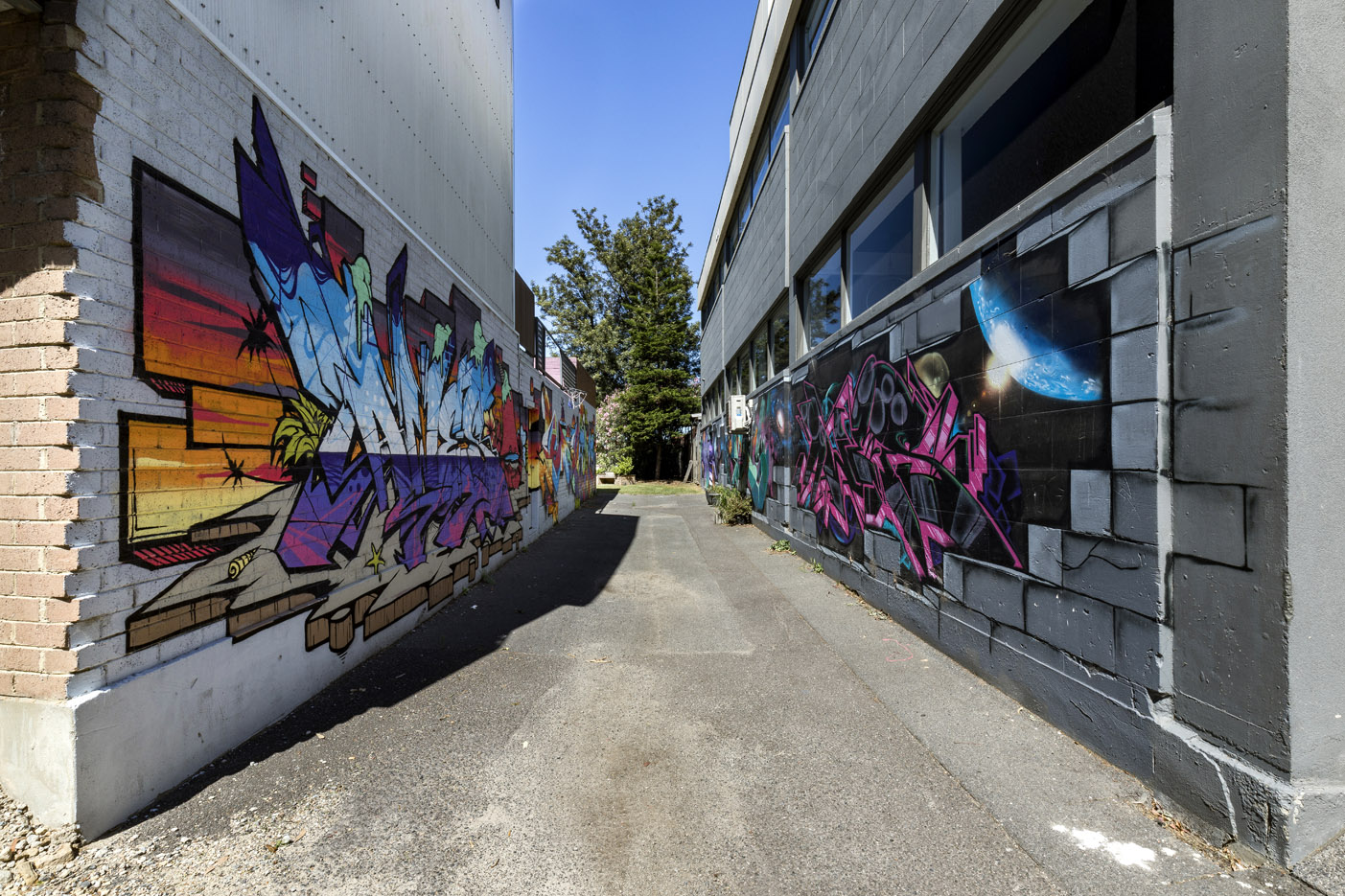Intellectual Property : Street artists … it’s time to know your rights.
Intellectual Property : Street artists … it’s time to know your rights.
What do Van Gogh, Andy Warhol and Jason “Revok” Williams all have in common?
They’re all artists … except the least famous name in this lineup had to go to court to get paid for his work.
In 2018, the LA artist saw an ad by clothing giant “H&M” featuring a design that he’d spray painted on a wall of a handball court in Brooklyn.
His lawyers sent the retailer a legal letter to ask them to stop breaching his copyright.
Unsurprisingly, they didn’t appreciate it and came back fighting.
H&M filed a lawsuit against Revok, arguing that the product of an “illegal” act - aka spray painting - couldn’t be protected by copyright law.
Supporters of the artists boycotted H&M. The retailer was forced to back down and eventually removed the ad campaign from its website.
It was a big moment for the street artists who were sorely in need of a win.
We work hard and deserve to be properly compensated when someone uses our work.
And I say ‘we’ … cause we’re proud members of Australia’s graffiti community.
And while we revel in being a bit unconventional, there’s nothing cool about being ripped off.
It’s time we wrapped our heads around copyright law.
So let’s run through the basics.
Any original art, in material form … be that on a painting on canvas, or a mural on a wall … is protected by copyright law. Which means you don’t have to register your work in Australia to have it covered by the law, you just get that legal protection.
“The copyright act doesn’t make exceptions for street art,” said Sharon Givoni, a Melbourne-based intellectual property & trademark law specialist. “ Even if it’s applied for temporary purposes, it’s still protected under copyright law.”
Let’s throw in a scenario that many of us might recognise.
You’re commissioned to do some art, perhaps by a council to paint a wall, and you’re paid for the job. Happy days.
But then a third party comes along and says ohhh that’s good … and takes a photo of it and uses it on their website, or as art on their menus.
Which they need to pay for. Any time that art is reproduced or recreated, it should attract a fee. Or at least an agreement from the artist to use the work for purposes other than which it was originally commissioned. There needs to be a negotiation.
That’s because copyright law was drawn up to allow artists to benefit from their talents.
Sharon Givoni says artists need to think of it as a basic economic right.
“Think of it this way. If the art is good enough to copy, it’s good enough to get paid for,” says Givoni. “Street artists make a huge difference to the character of our cities and they can use their art to raise social issues. They need to be paid for their work,” Givoni says.
Social media can be a double-edged sword.
“Social media can make it bad for the artist because it spreads it with such ease. But then on the other hand, because it spreads the artwork the minute someone wakes up and sees there’s a problem – and that might be the artist themselves – they make a racket. And that has shaken things up
Here are 5 easy ways of protecting yourself:
- Start a website that talks about your work, with an “about me” section. Add in there the type of commercial deals you might want and how people can get in touch.
- Put your name on your work, or a tag/symbol that people associate with your art.
- Draw up an agreement with simple terms and conditions that clients can sign off on. If you’re really keen you can draw up a formal contract. But it’s good to have something down in writing. It’s where you spell out your payment terms, limitations around artwork usage and any restrictions you want to place on use of your intellectual property.
- If you see someone who’s ripped off your work, go to a lawyer for help. They know what to say, they know how to pursue the matter. When calculating fees, consider the audience, distribution of that work and the artwork’s exposure.
- Be wary of hitting up social media, particularly if you’re fuming about someone ripping off your work. The risks include defamation, inaccuracy and things just getting ugly for you (as well as them).
Another tricky thing you might want to discuss with your lawyer is around the transfer of ownership of your artwork. Lots of brands request this. And it’s up to you how you navigate this but remember that if you agree to transfer of ownership, you might be handing over rights to a distinctive design that you’ll use at another time.. It’s just something to consider.
I’ll give the final word to Sharon Givoni, who’s represented artists & settled scores of matters out of court.
“Because street art is in the public domain, people think they can freely photograph it or share it and republish it, but this is where they’re actually wrong.”

Our Services
- MuralsGraffiti and street art murals for anywhere - hospitality, office, residential...01
- Brand ActivationsBranded live graffiti for product launches & brand activations. 02
- EventsLive artwork production by graffiti and street artists for events.03
- Removable ArtStreet art and graffiti prints, canvases and wallpaper.04
- DesignLogos, rebranding, graffiti and street art graphic design for print and digital.05
- WorkshopsLearn to paint with a spray can via a graffiti workshop experience.06
- Content CreationFilm a mural being painted and share the content on socials.07
- MaintenanceCare and upkeep of outdoor and indoor graffiti and street art murals.08
Read more about our services. Learn about our process.



